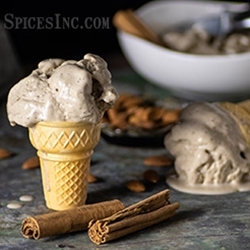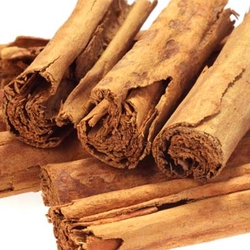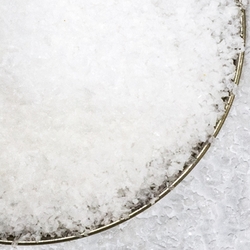Horchata Ice Cream

Horchata has a rich, creamy flavor that is perfectly suited to the world of a good scoop of ice cream. Horchata’s composition varies depending on the origins you’re tracing back to- though the Spanish have clearly made an impact on Mexican culture, the native cuisine had strong resiliency in adapting the drink enjoyed for centuries for something that better suited their diet. While Valencia Horchata is usually served with pastries in a café style setting at a Horchateria, Horchata in the Central American region is enjoyed on its own or paired with some sort of street food and tends to be slightly sweeter.
The base for the horchata can differ depending on where it's made. Traditionally Horchata in the Mediterranean region is made from “Tiger Nuts,” an ingredient native to northern Africa that is, well, not a nut. Mexican Horchata on the other hand is traditionally made with rice and almonds. Rarely do either feature any actual dairy products despite their creamy appearance and consistency, making for a much more refreshing drink on a warm summer day. Mexican Horchata is often associated with “Agua Frescas,” beverages you’d likely recognize even if you never knew the name for them which are found in a rainbow of colors. Chef Jeff’s ice cream was based on the more Mexican version of the drink. What ties these elements together- whether it’s tiger nuts, almond, or rice- is the warm, familiar, comforting fragrance of cinnamon.
Making your own ice cream at home can be intimidating but trust that the budgets ice cream making companies have poured into developing the easiest and most fool-proof processes possible ensure customers are able to get optimized results. The trickiest part of this recipe might be making sure you properly temper your custard. While it might be tempting to simply dump all these ingredients in a blender and pour them in your ice cream maker raw, creating a custard first ensures a luscious, creamy base that will mix smoothly as it was lowered in temperature. “Tempering” is the process of slowly introducing heat to a mixture that includes egg so that the eggs can begin to cook without curdling and resulting in scrambled eggs. Tempering also helps cook the eggs to a safe-to-eat state as freezing alone doesn’t kill salmonella.
If you’re interested in an ice cream that’s a little more fruity or herbal, maybe try our Blueberry Lavender Ice Cream!
- 1/2 Cup almonds, chopped rough
- 1/3 Cup long grain rice
- 1 Ceylon Cinnamon Stick
- 4 Cups almond milk
- 5 Egg yolks
- 3/4 Cup Coconut Sugar
- 3/4 tsp Kosher salt
- 1/2 tsp Vanilla Extract
- In a saucepan over medium heat, toast the Ceylon cinnamon stick, rice, and almonds. Stir frequently and toast 4-5 minutes until the cinnamon becomes fragrant and the almonds start turning golden. Add the almond milk, stir well and bring to a simmer. Remove from heat and let steep for 2 hours.
- In a food processor or blender, blend mixture until smooth. This will work best if done in 2 batches. Strain each batch into the saucepan. Discard the solids.
- Bring mixture to a simmer. Whisk eggs and coconut sugar together. Ladle half of the simmering mixture into the eggs and sugar. Mix that mixture back into the saucepan with the simmering liquid. Simmer until the mixture coats the back of a spoon.
- Remove liquid form heat and place in an ice bath. Whisk until cooled. Cover and refrigerate for 3 hours, or over night.
- Whisk mixture to combine again. Pour mixture into cylinder and follow manufactures directions.



